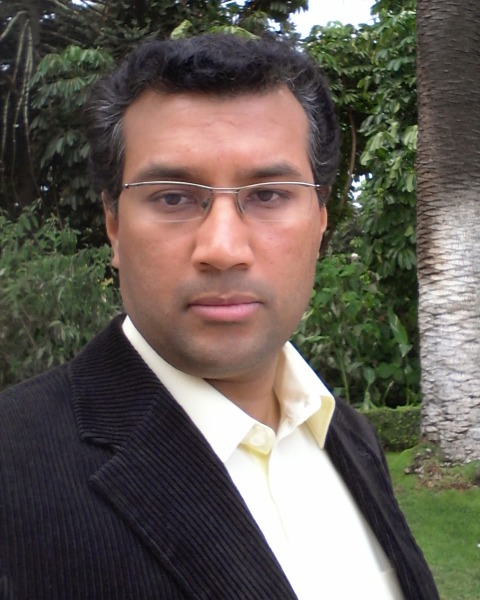Other plasma cell disorders
Poster Session 3
P-440: Validation of second revision of international staging system (R2 ISS) in a real-world myeloma population – an Asia Pacific Myeloma and Related Diseases Registry (APAC MRDR) study
Friday, September 29, 2023
1:15 PM - 2:15 PM EEST

Chandramouli Nagarajan, MD FRCP FRCPath (he/him/his)
Senior Consultant
SingHealth DUKE NUS Blood Cancer Center and Singapore General Hospital, Singapore
Introduction: The R2-ISS risk stratification system revises the R-ISS scoring system to improve risk stratification in newly diagnosed multiple myeloma (NDMM). The R2-ISS scoring system was derived in a clinical trial population composed mainly of European patients and hence by default the treatments those patients received were different to current standards of care in different parts of the world. Further, the applicability of this scoring in a real-world population from Asia remains unknown.
The aim of this study was to explore the validity of the R2-ISS scoring system in a real-world Asian population we applied the R2-ISS scoring to a cohort of Asian patients recruited into the Asia-Pacific (APAC) Myeloma and Related Diseases Registry (MRDR). Registry patients from 4 participating Asian countries/regions across multiple sites from Korea, Singapore, Malaysia and Taiwan were included.
Methods: R2-ISS scoring was retrospectively applied to a NDMM cohort from the APAC MRDR diagnosed between 1st January 2018 and 22nd October 2022. The Kaplan-Meier method was used to plot curves for progression-free survival (PFS) and overall survival (OS). Different risk groups were compared using the log-rank test.
Results: Of the 946 patients in the APAC MRDR from the 4 countries, complete staging data (ISS, LDH and FISH) was available for 642 patients. The median follow-up for the entire cohort was 12.3 months. Top 5 treatment regimens used for the whole cohort were VCD / VTD / RD / VMP and VRD. R2-ISS delineated the patients into 4 groups (Categories 1-4) with median PFS of NR, 29, 25 and 15 months respectively. PFS difference was significant between R2-ISS I vs III and R2-ISS I vs IV but not between R2-ISS I vs II. Similarly, OS was significantly longer for R2-ISS I vs IV group patients only. OS was not significantly different for R2-ISS I vs II whilst I vs III showed a trend towards significance.
Of the 372 patients originally belonging to the R-ISS2 category, 2, 114, 240 and 16 patients were re-classified as R2-ISS 1,2,3,4 groups respectively (mPFS 7, 29, 25 and 13 months). Apart from the 2 patients with R2-ISS score 1, the PFS of the rest of R2-ISS score patients delineated suggesting the validity of this scoring system in this group of patients. When R2ISS groups 1&2 and 3&4 were pooled together PFS was NR Vs 21.2 months. OS is not mature at the present time.
Conclusions: In this analysis, the R2-ISS system was able to stratify our cohort of Asian NDMM patients into four risk groups according to PFS. OS data is immature and longer follow-up is required. However, the clear distinction between groups I versus II was not seen in this real-world study likely due to the very low numbers in group 1. The R2-ISS effectively differentiates the R-ISS stage II category, addressing a disadvantage of the R-ISS system.
The aim of this study was to explore the validity of the R2-ISS scoring system in a real-world Asian population we applied the R2-ISS scoring to a cohort of Asian patients recruited into the Asia-Pacific (APAC) Myeloma and Related Diseases Registry (MRDR). Registry patients from 4 participating Asian countries/regions across multiple sites from Korea, Singapore, Malaysia and Taiwan were included.
Methods: R2-ISS scoring was retrospectively applied to a NDMM cohort from the APAC MRDR diagnosed between 1st January 2018 and 22nd October 2022. The Kaplan-Meier method was used to plot curves for progression-free survival (PFS) and overall survival (OS). Different risk groups were compared using the log-rank test.
Results: Of the 946 patients in the APAC MRDR from the 4 countries, complete staging data (ISS, LDH and FISH) was available for 642 patients. The median follow-up for the entire cohort was 12.3 months. Top 5 treatment regimens used for the whole cohort were VCD / VTD / RD / VMP and VRD. R2-ISS delineated the patients into 4 groups (Categories 1-4) with median PFS of NR, 29, 25 and 15 months respectively. PFS difference was significant between R2-ISS I vs III and R2-ISS I vs IV but not between R2-ISS I vs II. Similarly, OS was significantly longer for R2-ISS I vs IV group patients only. OS was not significantly different for R2-ISS I vs II whilst I vs III showed a trend towards significance.
Of the 372 patients originally belonging to the R-ISS2 category, 2, 114, 240 and 16 patients were re-classified as R2-ISS 1,2,3,4 groups respectively (mPFS 7, 29, 25 and 13 months). Apart from the 2 patients with R2-ISS score 1, the PFS of the rest of R2-ISS score patients delineated suggesting the validity of this scoring system in this group of patients. When R2ISS groups 1&2 and 3&4 were pooled together PFS was NR Vs 21.2 months. OS is not mature at the present time.
Conclusions: In this analysis, the R2-ISS system was able to stratify our cohort of Asian NDMM patients into four risk groups according to PFS. OS data is immature and longer follow-up is required. However, the clear distinction between groups I versus II was not seen in this real-world study likely due to the very low numbers in group 1. The R2-ISS effectively differentiates the R-ISS stage II category, addressing a disadvantage of the R-ISS system.
